WordPress 5.2 is expected to be released by the end of April 2019. We have been following the development and tested the first beta to try out new features that are on the way.
This release will bring improvements to the block editor, site health check, several bug fixes and minor enhancements.
In this article, we will show you what’s coming in WordPress 5.2 with features and screenshots.
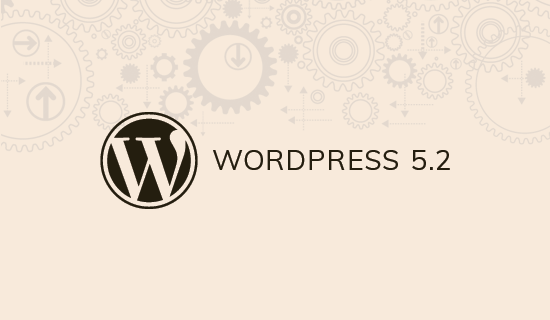
Note: You can try out the beta version on your computer or on a staging environment by using the WordPress Beta Tester plugin.
WordPress 5.2 is still under development, which means some features may not make it to the final release.
That being said, let’s take a look at some of the upcoming features in WordPress 5.2.
Improved Fatal Error Protection in WordPress
The most common WordPress errors are usually fatal errors that stop users from accessing the admin dashboard.
Users are then required to undo changes using an FTP client or ask their hosting company for support.
WordPress 5.2 introduces a new recovery mode for site administrators. In case of a fatal error, you will see a message that ‘This site is experiencing technical difficulties’.
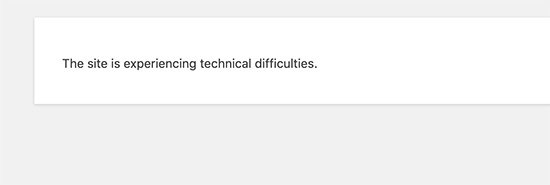
WordPress will then send an email to the admin email address with a special login link.
Using that link, you will be able to login to the WordPress admin area. After that, you can undo any changes that may have triggered the fatal error.
This feature will be a blessing for many beginners who find it quite difficult to fix such errors.
Block Editor Updates in WordPress 5.2
The WordPress block editor (Gutenberg) was introduced in WordPress 5.0. Since then there has been continuous development on the block editor to further improve it.
WordPress 5.2 will continue that with some new features and enhancements to the block editor.
Performance Improvements
The new WordPress block editor is much faster than the older classic editor. However, it could get slower when editing lengthier blog posts with tons of blocks.
WordPress 5.2 addressed that with significant performance improvements.
It will now shave 35% off the load time for massive posts. WordPress 5.2 will also cut the keypress time in half, which would make it feel way more responsive when you are typing.
Accessibility Improvements
The goal of WordPress is to democratize publishing and making the software accessible for all users. WordPress 5.2 will bring several accessibility improvements to the block editor.
- The block editor will now support reduced motion settings in user’s browser.
- The post URL slug will have better labeling and help text, which will make it easier to locate.
- Block editor will have a clearer and consistent focus styling for keyboard navigating through landmarks.
- WordPress 5.2 will also bring improved screen-reader experience with new speak messages. Existing speak messages are also improved to be clearer.
Introduction of New Blocks
WordPress 5.2 will also introduce the following new blocks in the default editor. Some of them were already available as Widgets, but now you can use them in posts and pages as well.
- RSS block – It will allow you to easily fetch and display any RSS feed in your WordPress posts and pages.
- Amazon Kindle embed block – Allows you to embed content from Amazon Kindle
- Search block – Add the default WordPress search feature in your content.
- Calendar block – Displays a calendar of your blog posts allowing users to click on a date to view posts published on that day.
- Tag Cloud block – Displays the tag cloud in your content.
A New Block Manager Tool
By default, the block editor comes with several default blocks. You also have plugins and themes adding their own blocks as well.
However, the reality is that you’ll probably never use all those blocks. Most users usually stick to a handful of blocks for writing all their content.
WordPress 5.2 will introduce a new block management tool, which will allow you to hide blocks that you don’t want to use.
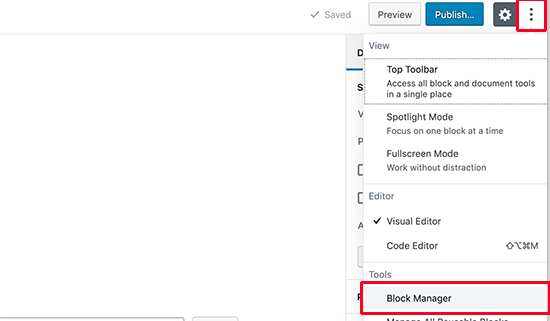
The block manager will list all the blocks that you have available on your site. You can simply uncheck the blocks that you don’t want to use.
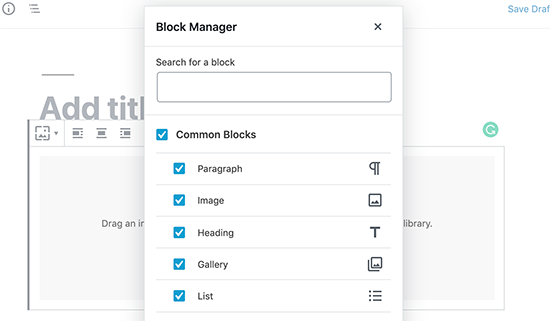
The Minimum PHP Version Requirement
WordPress is used by millions of people from all over the world, using different hosting companies, and hosting environments.
This is why WordPress still supports some older PHP versions, which is a bit problematic. Users may not even realize that they can improve the performance of their website by using a newer PHP version.
WordPress 5.2 will set the current minimum required PHP version to 5.6, which is still old (current stable PHP version is 7.3.2). The goal is to gradually increase the minimum required PHP version with future releases.
Users on the older versions of PHP will see a notification, that they are using an older PHP version and need to update it.
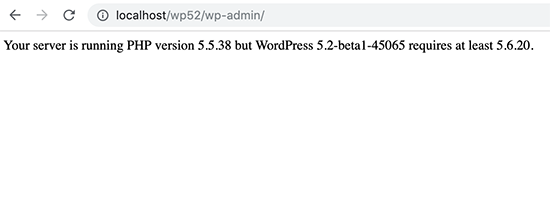
Under The Hood Improvements in WordPress 5.2
These are the changes in WordPress 5.2 which will mostly affect developers.
Users will be able to provide a log file path when adding WP_DEBUG_LOG in wp-config.php file. #18391.
Plugins will be able to specify the minimum required PHP version. #40934
Dashicons, the default icon font used for the WordPress admin area will have 25 new icons to use. #41074
We hope this article gave you a glimpse of what’s coming in WordPress 5.2. Let us know which features you find interesting and what new features you would like to see in the future.
If you liked this article, then please subscribe to our YouTube Channel for WordPress video tutorials. You can also find us on Twitter and Facebook.












